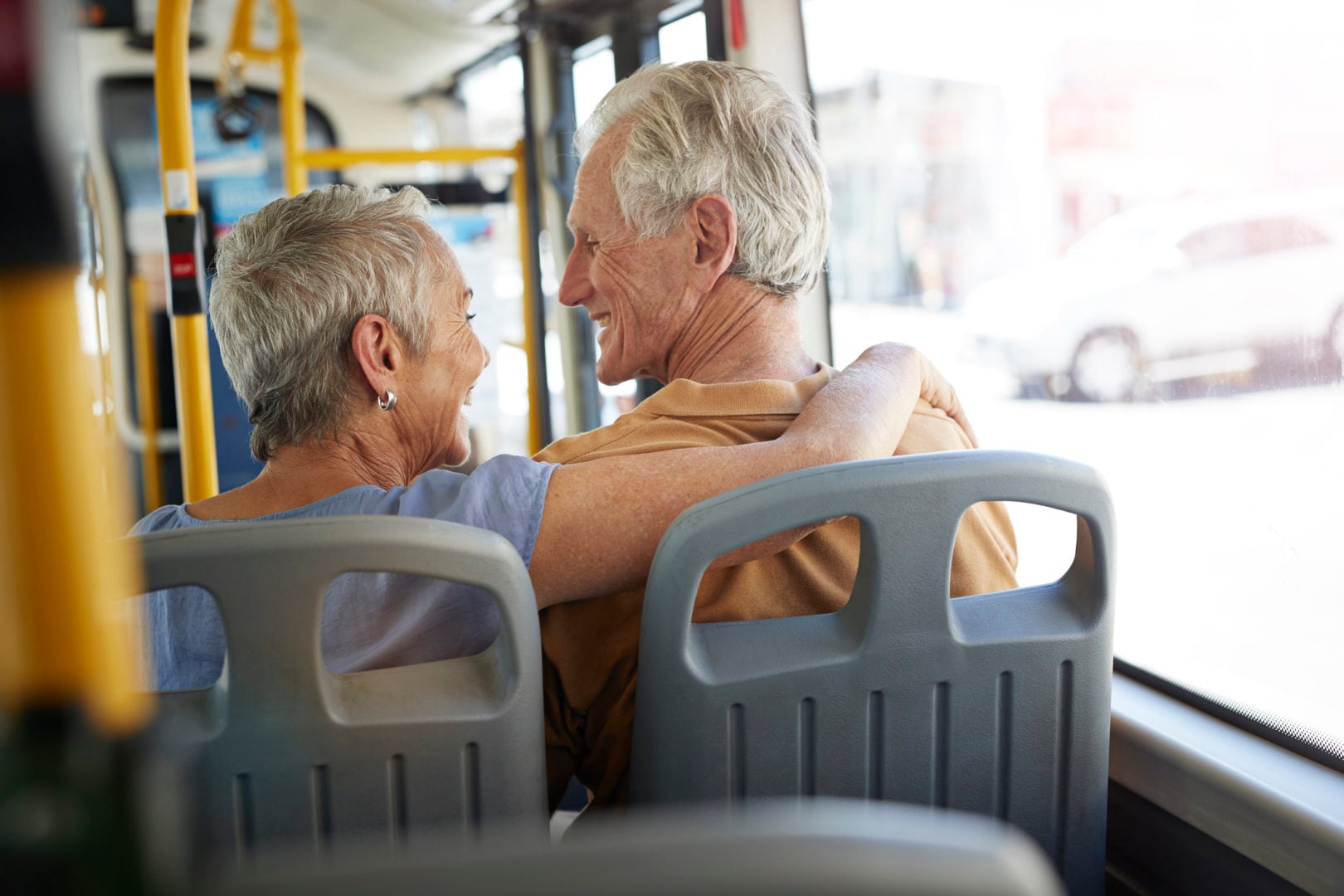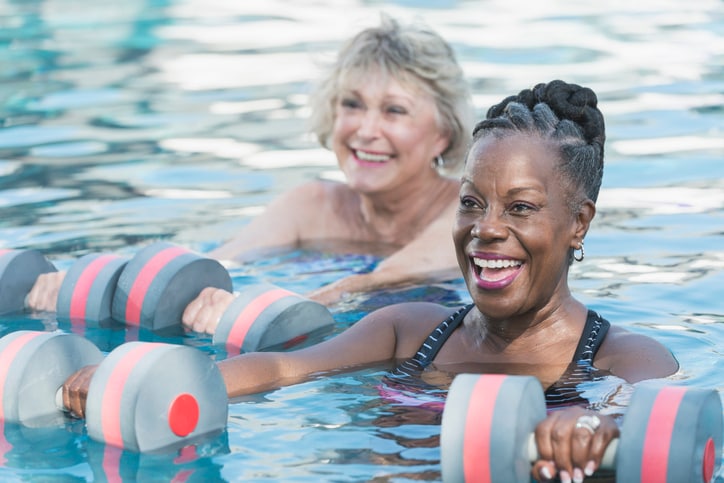My mom was always a great driver — as far as I know, she never got a single traffic ticket in her six decades behind the wheel. But when she started getting lost on the familiar route to her hair salon, we knew it was time to take away the car keys. My dad had already given up driving a few years earlier due to vision problems, so this was a major transition for my parents, who lived in the suburbs and relied on a car to get anywhere other than their backyard.
Thankfully, my brother and I were able to come up with a solution that suited everyone: We searched online and found Rhonda, a home aide who would come over two or three days a week to drive my parents on errands, to medical appointments and even on excursions to the beach or a farm stand when the weather was nice. We were relieved that my parents were safe, and my parents came to love Rhonda as both a driver and a friend. Rhonda eventually transitioned to a more full-time caregiver role, and she was the reason my parents were able to remain at home and aging in place for another three years.
Giving up driving can be an emotionally fraught time, but there are many transportation services and options that can give relatives peace of mind while providing rides and making seniors feel well cared for. These five transportation services for seniors, ranked from most to least expensive, are great way for older folks to get from Point A to B.
1. Home aide/driver
Depending on the aide’s availability, you can set up a regular weekly schedule to run errands, or you can call as needed for doctor’s appointments or other events. Be sure to check that their license is up to date and car has passed inspection.
Pros: You develop an ongoing relationship with a regular aide who gets to know your loved one’s routes and preferences, and you may be able to step up to more full-time help as needed.
Cons: When the driver is on vacation or sick, it may be difficult to line up a last-minute replacement.
Cost: $17-$26 per hour. Find senior transportation in your area. Below are some recent examples of cost, based on location, according to recent Care data.
Current senior transportation cost per hour for top cities*
| City, State | Hourly Cost of Senior Transportation |
|---|---|
| Seattle, Washington | $25.86/hr |
| Denver, Colorado | $23.24/hr |
| Portland, Oregon | $22.78/hr |
| San Diego, California | $22.50/hr |
| Brooklyn, New York | $21.44/hr |
| Alexandria, Virginia | $20.64/hr |
| Phoenix, Arizona | $20.04/hr |
| Philadelphia, Pennsylvania | $18.91/hr |
| Atlanta, Georgia | $18.40/hr |
| Charlotte, North Carolina | $17.94/hr |
| Orlando, Florida | $17.89/hr |
| San Antonio, Texas | $16.83/hr |
Join Care for free
2. Uber/Lyft/taxis
There’s always the old-fashioned way of calling a taxi service, but as long as the senior has a smartphone, they can tap their finger and order a car anywhere, anytime through ride-sharing apps like Uber and Lyft (or you can order the ride for them on your smartphone).
Linda Morgenlander, 80, recently gave up her car, but she didn’t want to give up all the cultural activities she loves near her home in Sarasota, Florida.
“I’ve started to take Uber to the movies and to the theater,” she says. “It’s great not to have a car. I had to pay so much money for car insurance. It’s actually much less expensive to just take Uber when I need it.”
Pros: No need to commit to a regular schedule — just call the car whenever you need it. With a ride-sharing app, you can see exactly how far away the car is, plus the license plate number and the driver’s name.
Cons: There will be a different driver each time, so quality can vary.
“Sometimes the drivers have trouble finding things,” says Morgenlander. “But mostly it’s very convenient for me.”
Cost: The estimated average Uber cost per mile is $1-$2 per mile in 2024, according to Ridester, and a Lyft trip will cost you about the same. Costs may vary based on location, service type, ride distance, time and demand (high-demand periods may mean higher, surge pricing). Download the Uber or Lyft apps for exact rates.
3. Public transportation
Unlike my parents, who lived in a car-centric suburb, my mother-in-law lives in a city with many public transportation services. She hasn’t driven in years, but she gets all over town by riding the public buses.
Pros: Depending on where you live, the bus, tram or subway may be the fastest, most convenient option for getting anywhere.
Cons: If you have limited mobility or use a walker, the stairs to the train station or steps up onto a bus can be a major obstacle.
Cost: As little as $1-$2 per ride with senior fares on public transit. Below are some examples of current public transportation fares, based on location.
Senior discounts per ride for public transportation in top cities**
| City Transit System | Regular Per-Ride Fare | Discounted Per-Ride Fare | Eligibility |
|---|---|---|---|
| Houston METRORail | $1.25 | $0.60 | Seniors 65-69, people with disabilities |
| Los Angeles Metro Rail | $1.75 | $0.75 peak; $0.35 off-peak | Seniors 62+, Medicare recipients and people with disabilities |
| Philadelphia SEPTA | $2 | Free | Seniors 65+ with a valid Senior Fare card |
| Chicago Transit Authority | $2.25-$2.50 | $1.10-$1.25 | Seniors, Medicare recipients and people with disabilities. |
| New York City MTA | $2.90 | $1.45 | Seniors 65+, any person with a qualifying disability |
“I live on the second floor, and the drivers will carry my groceries up for me and also help me walk me down the outdoor stairs when it’s slippery out.”
— Barbara Wadyka
4. Senior call-and-ride programs
When Barbara Wadyka, 83, moved from Baltimore to Boulder, Colorado five years ago to be closer to her daughter and granddaughter, she decided to sell her car. Since then, she has become a big fan of the city’s Via Mobility Services, a transport service for seniors and those with limited mobility (other cities have Access-A-Ride and other variations of this system).
“I have to call and make reservations a few days in advance, but I love it,” Wadyka says, adding that she is most happy to be car-free during the freezing Colorado winters. “I really don’t miss having to scrape the ice off my car on cold mornings!”
Pros: Since these programs are meant for seniors and people with disabilities, drivers are trained to be especially helpful.
“I live on the second floor,” Wadyka says, “and the drivers will carry my groceries up for me and also help me walk me down the outdoor stairs when it’s slippery out.”
Cons: You have to call and reserve a ride several days in advance, so no spontaneous trips to the movies.
Cost: Free or low cost, usually around the same for buses or subways in that city. Visit USAging or the National Aging and Disability Transportation Center (NADTC) to find options near you. For transportation options in your area, you may also enter your ZIP code at eldercare.acl.gov or call the national toll-free Eldercare Locator hotline at 800-677-1116.
5. Friends or volunteers
Many local nonprofits keep a roster of volunteers who offer door-to-door transportation for seniors for things like errands and appointments. Check this Google map to find a volunteer transportation program in your state.
If you can’t find a program near you, don’t be afraid to ask friends who still drive to give you a lift now and then. They’ll likely be happy to help, especially if you treat them to a coffee when you get to your destination.
Pros: It’s free and provides a social outlet along with the ride.
Cons: Availability of volunteer drivers depends on your location.
Cost: A smile and a thank you (and maybe that coffee).

